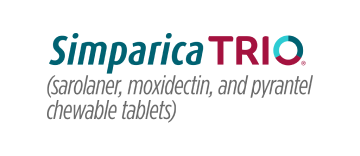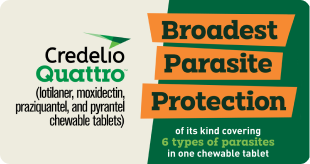

What is AlphaDog DNA The Essential Canine DNA Test ?
Gain a deeper understanding of your dog’s genetic profile with the AlphaDog DNA Essential Canine DNA Test. This comprehensive test analyzes over 400 traits, including health risks, behavior, coat color, and physical attributes, providing valuable insights to enhance your dog’s care. Plus you'll gain access to new features as they are released making your information readily actionable; including Genomic Inbreeding, the Marketplace, breed match features such as Build-a-Dog (design and preview your future pup), and even AI tools for visualization. For a limited time only, each Essential Canine DNA Test purchase includes a FREE upgrade to Ancestry and Breed Composition upon feature release.
Suitable for:
Dogs
Benefits:
- Only the Best for Your Best Frend: This comprehensive test analyzes over 400 traits, including health conditions and risks, behavior traits, coat color, and appearance traits, providing valuable insights to enhance your dog’s care.
- Health Screening in days not weeks: Extensive testing panel for genetic conditions and disease risks; includes breed-specific panels to help ensure your dog’s future well-being.
- Free Ancestry and Breed Composition Upgrade: Identifies and compares your dog’s breed composition, revealing their unique genetic heritage.
- Trait Analysis: Explores key traits like coat color, health, size, behavior, and physical characteristics.
- User-Friendly Results: Detailed and easy-to-understand report delivered online within 7-10 business days after sample receipt.
- Access to the Marketplace: Unlock personalized product recommendations tailored to your dog’s DNA, including food, products, services, and accessories along with unique Build-a-Dog tools and AI visualization (as features are released).
- Dogs Like Me: Coming Soon! Is your dog one-of-a-kind, or do they share similarities with others? The Dogs Like Me feature will allow you to find genetically similar pups within the Alpha Dog DNA community. It’s a fun way to connect with other dog owners and explore your dog’s genetic network.
How does AlphaDog DNA The Essential Canine DNA Test work?
The AlphaDog DNA test unlocks the secrets of your dog's ancestry. With a simple cheek swab, you can discover your dog's breed mix, learn about their potential health predispositions, and gain valuable insights into their unique genetic makeup. Perfect for pet owners looking to better understand their dog's unique traits, this foundational test covers over 350 genetic markers across three core categories:Health: Identify potential genetic risks and gain proactive insights to support your dog’s well-being.Behavior: Discover how genetics influence your dog’s personality, habits, and training potential.Physical Traits: Learn what makes your dog look the way they do, from coat type to unique physical features.The Essential Canine DNA Test is an invaluable tool for enhancing your dog's care, health management, and overall quality of life.
How should I store this product?
Keep the kit in it's original packaging to protect the components and prevent contamination. Store unopened kit at room temperature, away from excessive heat, moisture, and direct sunlight.


AlphaDog DNA The Essential Canine DNA Test Directions:
- Ensure your dog hasn't eaten or had water for 30 minutes.
- Open the swab package, keeping the tip sterile.
- Gently rub the swab inside your dog's cheek for 30-60 seconds, focusing on the back of the mouth.
- Label the tube with your and your dog's name using the enclosed label.
- Place the sealed tube in the provided clear plastic bag.
- Place the bag with the swab in the pre-paid mailer and take to your nearest USPS post box.
- Place the swab in the tube with the liquid, securely seal it by twisting.
After receiving your dog's DNA results, research the identified breeds to better understand their specific needs and potential health concerns.


AlphaDog DNA The Essential Canine DNA Test Details: Health Conditions & Risk Tests Included
|
Coat Color & Appearance Traits: (E Locus), curl (Cu Locus), dilution (D Locus), saddle tan (As Locus), brown (B Locus), and cocoa (Co Locus). Additional markers include those for long hair (L Locus), merle (M Locus), harlequin (H Locus), and intensity (I Locus), as well as furnishings and improper coat (IC Locus), roan/ticked (R Locus), and white spotting (S Locus). The panel also includes testing for the agouti gene (A Locus), dominant black (K Locus), and the hairless gene (Hr Locus). Further analysis includes coat length (MIPEP), shedding (SD Locus), body size, curly tail, ear position, head shape, leg length, natural bobtail (T Locus), and screw tail (ST Locus). Behavior Traits: Escaping, Excitability, Familiar Dog Aggression, Owner Aggression, Rivalry Aggression, Separation Anxiety, Separation Urination, Stranger Aggression, Stranger Fear, Stress at Veterinarian, Touch Sensitivity, Trainability, Unfamiliar Dog Aggression. Health Traits: Acral Mutilation Syndrome, Acute Respiratory Distress Syndrome, Adult Onset Deafness Border Collie (Linkage Association Test), Adult Paroxysmal Dyskinesia, Afibrinogenemia (Dachshund Type), Alaskan Husky Encephalopathy, Alaskan Malamute Polyneuropathy, Alexander Disease (Labrador Retriever Type), Amelogenesis Imperfecta (Italian Greyhound Type), Amelogenesis Imperfecta (Parson Russell Terrier Type), Amelogenesis Imperfecta (Samoyed Type), Autosomal Recessive Neuronal Degeneration, Bald Thigh Syndrome, Benign Familial Juvenile Epilepsy, Bernard-Soulier Syndrome, Brachycephaly, Canine Leukocyte Adhesion Deficiency, Type I, Canine Multiple System Degeneration (Chinese Crested Type), Canine Multiple System Degeneration (Kerry Blue Terrier Type), Canine Scott Syndrome, Cardiomyopathy and Juvenile Mortality, Catalase Deficiency, Centronuclear Myopathy, Centronuclear Myopathy (Labrador Retriever Type), Cerebellar Ataxia (CA) (Spinone Italiano Type), Cerebellar Ataxia (Finnish Hound Type), Cerebellar Ataxia (RALGAPA1), Cerebellar Ataxia (SELENOP), Cerebellar Ataxia 1 (Belgian Shepherd Type), Cerebellar Ataxia 2 (Belgian Shepherd Type), Cerebellar Cortical Degeneration, Cerebellar Degeneration, Cerebral Dysfunction (Friesian Stabyhoun Type), Charcot-Marie-Tooth Disease, Chondrodysplasia (Karelian Bear Dog and Norwegian Elkhound Type), Chondrodystrophy (CDDY and IVDD Risk) with or without Chondrodysplasia (CDPA), Cleft Palate (DLX6-related), Cleft Palate and Syndactyly (Nova Scotia Duck Tolling Retriever Type), Coagulation Factor VII Deficiency, Collie Eye Anomaly, Complement 3 Deficiency, Cone Degeneration, Cone Degeneration (German Shepherd Dog Type), Cone Degeneration (German Shorthaired Pointer Type), Cone Degeneration (Labrador Retriever Type), Congenital Cornification Disorder (Golden Retriever Type), Congenital Cornification Disorder I (Discovered in Chihuahua), Congenital Cornification Disorder II (Discovered in Chihuahuas), Congenital Dyshormonogenic Hypothyroidism with Goiter (Shih Tzu Type), Congenital Eye Malformation (Golden Retriever Type), Congenital Hypothyroidism (Tenterfield Terrier Type), Congenital Hypothyroidism (Toy Fox and Rat Terrier Type), Congenital Hypothyroidism with Goiter (Spanish Water Dog Type), Congenital Hypothyroidism with Goiter (Terrier Type), Congenital Idiopathic Megaesophagus Risk Factor (German Shepherd Type), Congenital Macrothrombocytopenia (Cairn and Norfolk Terrier Type), Congenital Methemoglobinemia, Congenital Myasthenic Syndrome (Golden Retriever Type), Congenital Myasthenic Syndrome (Heideterrier Type), Congenital Myasthenic Syndrome (Jack Russell Terrier Type), Congenital Myasthenic Syndrome (Labrador Retriever Type), Congenital Myasthenic Syndrome (Old Danish Pointer Type), Congenital Stationary Night Blindness, Copper Storage Disease, Copper Toxicosis (Labrador Retriever Type), Craniomandibular Osteopathy, Craniomandibular Osteopathy (Weimaraner Type), Cyclic Neutropenia, Cystinuria (Australian Cattle Dog Type), Cystinuria (Labrador Retriever Type), Cystinuria (Miniature Pinscher Type), Cystinuria (Newfoundland Type), Cystinuria Type 3 (Bulldog Type Risk Factor, Variants 2 and 3), Dandy-Walker-Like Malformation, Darier Disease and Associated Infundibular Cyst Formation, Deafness and Vestibular Dysfunction (Doberman Pinscher Type), Variant 1, Deafness and Vestibular Dysfunction (Doberman Pinscher Type), Variant 2, Degenerative Myelopathy (Bernese Mountain Dog Variant), Degenerative Myelopathy (Common Variant), Degenerative Myelopathy Early-Onset Risk Modifier (Pembroke Welsh Corgi Type), Demyelinating Polyneuropathy, Dental Hypomineralization, Dermatomyositis, Diffuse Cystic Renal Dysplasia and Hepatic Fibrosis, Dilated Cardiomyopathy (Doberman Pinscher Type Risk Factor, Variant 1), Dilated Cardiomyopathy (Doberman Pinscher Type Risk Factor, Variant 2), Dilated Cardiomyopathy (Schnauzer Type), Dominant Progressive Retinal Atrophy, Dry Eye Curly Coat Syndrome, Dystrophic Epidermolysis Bullosa (Basset Hound Type), Dystrophic Epidermolysis Bullosa (Central Asian Ovcharka Type), Dystrophic Epidermolysis Bullosa (Golden Retriever Type), Early Onset Adult Deafness (Rhodesian Ridgeback Type), Early Retinal Degeneration, Early-Onset Epilepsy (Parson Russell Terrier Type), Ectodermal Dysplasia (Chesapeake Bay Retriever Type), Ectodermal Dysplasia, X-Linked (Dachshund Type), Ectodermal Dysplasia, X-Linked (Shepherd Type), Ehlers-Danlos Syndrome (Doberman Pinscher Type), Ehlers-Danlos Syndrome (Labrador Retriever Type) varient 1, Ehlers-Danlos Syndrome (Labrador Retriever Type), Variant 2, Ehlers-Danlos Syndrome (Poodle Type, Variants 1 and 2), Elliptocytosis, Epidermolytic Hyperkeratosis, Episodic Falling Syndrome, Exercise-Induced Collapse, Exfoliative Cutaneous Lupus Erythematosus (ECLE), Factor XI Deficiency, Familial Nephropathy (Cocker Spaniel Type), Familial Nephropathy (English Springer Spaniel Type), Fanconi Syndrome, Focal Non-Epidermolytic Palmoplantar Keratoderma, Fucosidosis, Gallbladder Mucoceles, Glanzmann's Thrombasthenia (Great Pyrenees Type), Glanzmann's Thrombasthenia (Mixed breed), Glanzmann's Thrombasthenia (Otterhound Type), Glaucoma (Border Collie Type), Globoid Cell Leukodystrophy (Irish Setter Type), Globoid Cell Leukodystrophy (Terrier Type), Glycogen Storage Disease Ia, Glycogen Storage Disease IIIa, Glycogen Storage Disease VII (Wachtelhund Type), Glycogen Storage Disease VII, PFK Deficiency, GM1 Gangliosidosis (Alaskan Husky Type), GM1 Gangliosidosis (Portuguese Water Dog Type), GM1 Gangliosidosis (Shiba Inu Type), GM2 Gangliosidosis (Japanese Chin Type), GM2 Gangliosidosis (Poodle Type), GM2 Gangliosidosis (Shiba Inu Type), Greyhound Polyneuropathy, Hemophilia A (Boxer Type), Hemophilia A (German Shepherd Dog, Type 1), Hemophilia A (German Shepherd Dog, Type 2), Hemophilia A (Havanese Type), Hemophilia A (Old English Sheepdog Type), Hemophilia A (Rhodesian Ridgeback Type), Hemophilia B (Airedale Terrier Type), Hemophilia B (Cairn Terrier Type), Hemophilia B (Lhasa Apso Type), Hemophilia B (Rhodesian Ridgeback Type), Hereditary Ataxia (Australian Shepherd Type), Hereditary Ataxia (Belgian Malinois Type), Hereditary Ataxia (Norwegian Buhund type), Hereditary Cataracts, Hereditary Cataracts (Australian Shepherd Type), Hereditary Cataracts (Australian Shepherd Type), Hereditary Cataracts (Wirehaired Pointing Griffon Type), Hereditary Footpad Hyperkeratosis (Irish Terrier and Kromfohrländer type), Hereditary Footpad Hyperkeratosis (Rottweiler Type), Hereditary Nasal Parakeratosis (Greyhound Type), Hereditary Nasal Parakeratosis (Labrador Retriever Type), Hereditary Nephritis (Samoyed Type), Hereditary Vitamin D-Resistant Rickets Type II, HyperuricosuriaHypomyelination (Weimaraner Type), HypophosphatasiaIchthyosis (American Bulldog Type), Ichthyosis (Golden Retriever Type 1), Ichthyosis (Golden Retriever Type 2), Ichthyosis (Great Dane Type), Ichthyosis (Jack Russell Terrier Type), Ichthyosis (Pembroke Welsh Corgi Type), Inflammatory Myopathy (Shepherd Type), Inguinal Cryptorchidism, Inherited Myopathy of Great Danes, Intestinal Cobalamin Malabsorption (Australian Shepherd Type), Intestinal Cobalamin Malabsorption (Beagle Type), Intestinal Cobalamin Malabsorption (Border Collie Type), Intestinal Cobalamin Malabsorption (Giant Schnauzer Type), Intestinal Cobalamin Malabsorption (Komondor Type), Intestinal Lipid Malabsorption, Junctional Epidermolysis Bullosa (Australian Shepherd Type), Juvenile Laryngeal Paralysis and Polyneuropathy (Black Russian Terrier Type), Juvenile Myoclonic Epilepsy (Rhodesian Ridgeback Type), L-2-Hydroxyglutaric Aciduria (Staffordshire Bull Terrier Type), L-2-Hydroxyglutaric Aciduria (Yorkshire Terrier Type), Lafora Disease, Lagotto Storage Disorder, Laryngeal Paralysis and Polyneuropathy (Leonberger Type 3), Late Onset Ataxia, Leigh syndrome, Lethal Acrodermatitis, Leukocyte Adhesion Deficiency, Type III, Leukoencephalomyelopathy, Ligneous Membranitis, Limb-Girdle Muscular Dystrophy (Dachshund Type), Limb-girdle Muscular Dystrophy, Type 2F (Boston Terrier Type), Long QT Syndrome, Lundehund Syndrome, Lung Developmental Disease (Discovered in the Airedale Terrier), Macular Corneal Dystrophy (Labrador Retriever Type), May-Hegglin Anomaly, Microphthalmia, Mucopolysaccharidosis I (Boston Terrier Type), Mucopolysaccharidosis I (Plott Hound Type), Mucopolysaccharidosis IIIA (Dachshund Type), Mucopolysaccharidosis IIIA (New Zealand Huntaway Type), Mucopolysaccharidosis IIIB (Schipperke Type), Mucopolysaccharidosis VI (Miniature Schnauzer Type), Mucopolysaccharidosis VII (Brazilian Terrier Type), Mucopolysaccharidosis VII (Shepherd Type), Mucopolysaccharidosis VII (Shepherd Type), Multidrug Resistance 1, Multifocal Retinopathy 1, Multifocal Retinopathy 2, Multifocal Retinopathy 3, Muscular Dystrophy (Cavalier King Charles Spaniel Type), Muscular Dystrophy (Golden Retriever Type), Muscular Dystrophy (Norfolk Terrier Type), Muscular Dystrophy, Ullrich Type (Landseer Type), Muscular Hypertrophy (Double Muscling), Musladin-Lueke Syndrome, Myeloperoxidase Deficiency (Italian Hound Type), Myotonia Congenita (Australian Cattle Dog Type), Myotonia Congenita (Labrador Retriever Type), Myotonia Congenita (Schnauzer Type), Myotubular Myopathy 1 (Boykin Spaniel Type), Myotubular Myopathy 1 (Labrador Retriever Type), Myotubular Myopathy 1 (Rottweiler Type), Narcolepsy (Dachshund Type), Narcolepsy (Doberman Pinscher Type), Narcolepsy (Labrador Retriever Type), Neonatal Ataxia, Neonatal Cerebellar Cortical Degeneration, Neonatal Encephalopathy with Seizures, Neuroaxonal Dystrophy, Neuroaxonal Dystrophy (Giant Schnauzer Type), Neuroaxonal Dystrophy (Papillon Type), Neuroaxonal Dystrophy (Rottweiler Type), Neuroaxonal Dystrophy (Spanish Water Dog Type), Neurodegeneration w/ Alpha-Mannosidase Deficiency and Cytoplasmic Vacuoles, Neuronal Ceroid Lipofuscinosis (Tibetan Terrier Type), Neuronal Ceroid Lipofuscinosis 1Neuronal Ceroid Lipofuscinosis 1 (Cane Corso Type), Neuronal Ceroid Lipofuscinosis 10, Neuronal Ceroid Lipofuscinosis 12, Neuronal Ceroid Lipofuscinosis 2, Neuronal Ceroid Lipofuscinosis 4A, Neuronal Ceroid Lipofuscinosis 5 (Golden Retriever Type), Neuronal Ceroid Lipofuscinosis 5 (Herding Dog Type), Neuronal Ceroid Lipofuscinosis 6, Neuronal Ceroid Lipofuscinosis 7, Neuronal Ceroid Lipofuscinosis 8 (Australian Shepherd Type), Neuronal Ceroid Lipofuscinosis 8 (Saluki Type) (Duplication), Neuronal Ceroid Lipofuscinosis 8 (Setter Type), Nonsyndromic Hearing Loss (Rottweiler Type), Oculocutaneous Albinism (Doberman Pinscher Type), Oculocutaneous Albinism (Small Breed Type), Osteochondrodysplasia, Osteochondromatosis (American Staffordshire Terrier Type), Osteogenesis Imperfecta (Beagle Type), Osteogenesis Imperfecta (Dachshund Type), Osteogenesis Imperfecta (Golden Retriever Type), P2RY12 Receptor Platelet Disorder, Pembroke Welsh Corgi Duchenne Muscular Dystrophy, Persistent Müllerian Duct Syndrome, Pituitary Dwarfism (Karelian Bear Dog Type), Pituitary Dwarfism (Shepherd Type), Pituitary-Dependent Hyperadrenocorticism (Poodles Type), Polycystic Kidney Disease, Polydactyly (Asian breeds), Polydactyly (Common Variant), Polydactyly (Great Pyrenees Type), Polyneuropathy (Leonberger and Saint Bernard Type), Polyneuropathy (Leonberger Type 2), Polyneuropathy with Ocular Abnormalities and Neuronal Vacuolation, Pompe Disease, Prekallikrein Deficiency, Primary Ciliary Dyskinesia (Alaskan Malamute Type), Primary Ciliary Dyskinesia (Old English Sheepdog Type), Primary Hyperoxaluria, Primary Lens Luxation, Primary Open Angle Glaucoma, Primary Open Angle Glaucoma (Basset Fauve de Bretagne Type), Primary Open Angle Glaucoma (Basset Hound Type), Primary Open Angle Glaucoma (Norwegian Elkhound Type), Primary Open Angle Glaucoma (Petit Basset Griffon Vendeen Type), Primary Open Angle Glaucoma and Primary Lens Luxation (Shar Pei Type), Progressive Retinal Atrophy (Basenji Type), Progressive Retinal Atrophy (Bullmastiff/Mastiff Type), Progressive Retinal Atrophy (Giant Schnauzer Type), Progressive Retinal Atrophy (Irish Setter Type), Progressive Retinal Atrophy (Shetland Sheepdog Type), Progressive Retinal Atrophy (Sloughi Type), Progressive Retinal Atrophy (Swedish Vallhund Type), Progressive Retinal Atrophy 1 (Italian Greyhound Type), Progressive Retinal Atrophy, Cone-Rod Dystrophy (Dachshund Type), Progressive Retinal Atrophy, Cone-Rod Dystrophy 1 (American Staffordshire Terrier Type), Progressive Retinal Atrophy, Cone-Rod Dystrophy 2 (American Staffordshire Terrier Type), Progressive Retinal Atrophy, Cone-Rod Dystrophy 3 (Glen of Imaal Terrier Type), Progressive Retinal Atrophy, Cone-Rod Dystrophy 4, Progressive Retinal Atrophy, Early Onset (Spanish Water Dog Type), Progressive Retinal Atrophy, Early-Onset (Portuguese Water Dog Type), Progressive Retinal Atrophy, Generalized (Schapendoes Type), Progressive Retinal Atrophy, Golden Retriever 1, Progressive Retinal Atrophy, Golden Retriever 2, Progressive Retinal Atrophy, Late-Onset (Lapponian Herder Type), Progressive Retinal Atrophy, PRA1 (Papillon Type), Progressive Retinal Atrophy, PRA3 (Tibetan Terrier and Spaniel Type), Progressive Retinal Atrophy, PRA4 (Lhasa Apso Type), Progressive Retinal Atrophy, Progressive Rod-Cone Degeneration Progressive Retinal Atrophy, Rod-Cone Dysplasia 2 (Collie Type), Progressive Retinal Atrophy, Rod-Cone Dysplasia 3, Progressive Retinal Atrophy, Rod-Cone Dysplasia 4, Progressive Retinal Atrophy, Syndromic Retinal Degeneration (Shetland Sheepdog Type), Progressive Retinal Atrophy, X-Linked 1 (Husky Type), Progressive Retinal Atrophy, X-linked 2, Protein Losing Nephropathy, Pyruvate Dehydrogenase Deficiency, Pyruvate Kinase Deficiency (Basenji Type), Pyruvate Kinase Deficiency (Beagle Type), Pyruvate Kinase Deficiency (Labrador Retriever Type), Pyruvate Kinase Deficiency (Pug Type), Pyruvate Kinase Deficiency (Terrier Type), Recurrent Inflammatory Pulmonary Disease, Renal Cystadenocarcinoma and Nodular Dermatofibrosis, Retinal Dysplasia/Oculoskeletal Dysplasia 1, Retinal Dysplasia/Oculoskeletal Dysplasia 2, Sensory Neuropathy (Border Collie Type), Severe Combined Immunodeficiency Disease (Terrier Type), Severe Combined Immunodeficiency Disease (Wetterhoun Type), Shar-Pei Autoinflammatory Disease, Skeletal Dysplasia 2, Spinal Dysraphism, Spinocerebellar Ataxia (Alpine Dachsbrake Type), Spinocerebellar Ataxia (Terrier Type), Spondylocostal Dysostosis, Stargardt Disease, Startle Disease, Subacute Necrotizing Encephalopathy (Yorkshire Terrier Type), Success in Assistance Dog Training Programs, Thrombopathia (American Eskimo Dog Type), Thrombopathia (Basset Hound Type), Thrombopathia (Newfoundland Type), Trapped Neutrophil Syndrome, Ullrich Congenital Muscular Dystrophy (Labrador Retriever Type 1), Ullrich Congenital Muscular Dystrophy (Labrador Retriever Type 2), Urolithiasis (Native American Indian Dog Type), Van Den Ende-Gupta SyndromeVon Willebrand Disease I, Von Willebrand Disease II, Von Willebrand Disease III (Kooikerhondje Type), Von Willebrand Disease III (Scottish Terrier Type), Von Willebrand Disease III (Shetland Sheepdog Type), X-Linked Hereditary Nephropathy (Navasota Dog Type), X-Linked Severe Combined Immunodeficiency Disease (Basset Hound Type), X-Linked Severe Combined Immunodeficiency Disease (Corgi Type), X-Linked Tremors (English Springer Spaniel Type), Xanthinuria, Type 1 (Mixed breed Type), Xanthinuria, Type II (Cavalier King Charles Spaniel Type), Xanthinuria, Type II (Toy Manchester Terrier Type), Obesity (in Labrador Retrievers), Junctional Epidermolysis Bullosa (Australian Shepherd Type), Junctional Epidermolysis Bullosa (Australian cattle dog), Laryngeal Paralysis (Miniature Bull Terriers), Litter size in Entlebucher Mountain Dogs, Mitochondrial dysfunction syndrome 3 (MMDS3), Centronuclear myopathy, Cardiac arrhythmia, Epidermolysis bullosa simplex (Split Paw Pad Disease). |
|---|


 Swipe
Swipe
Customers also boughtView All
 Swipe
Swipe












































